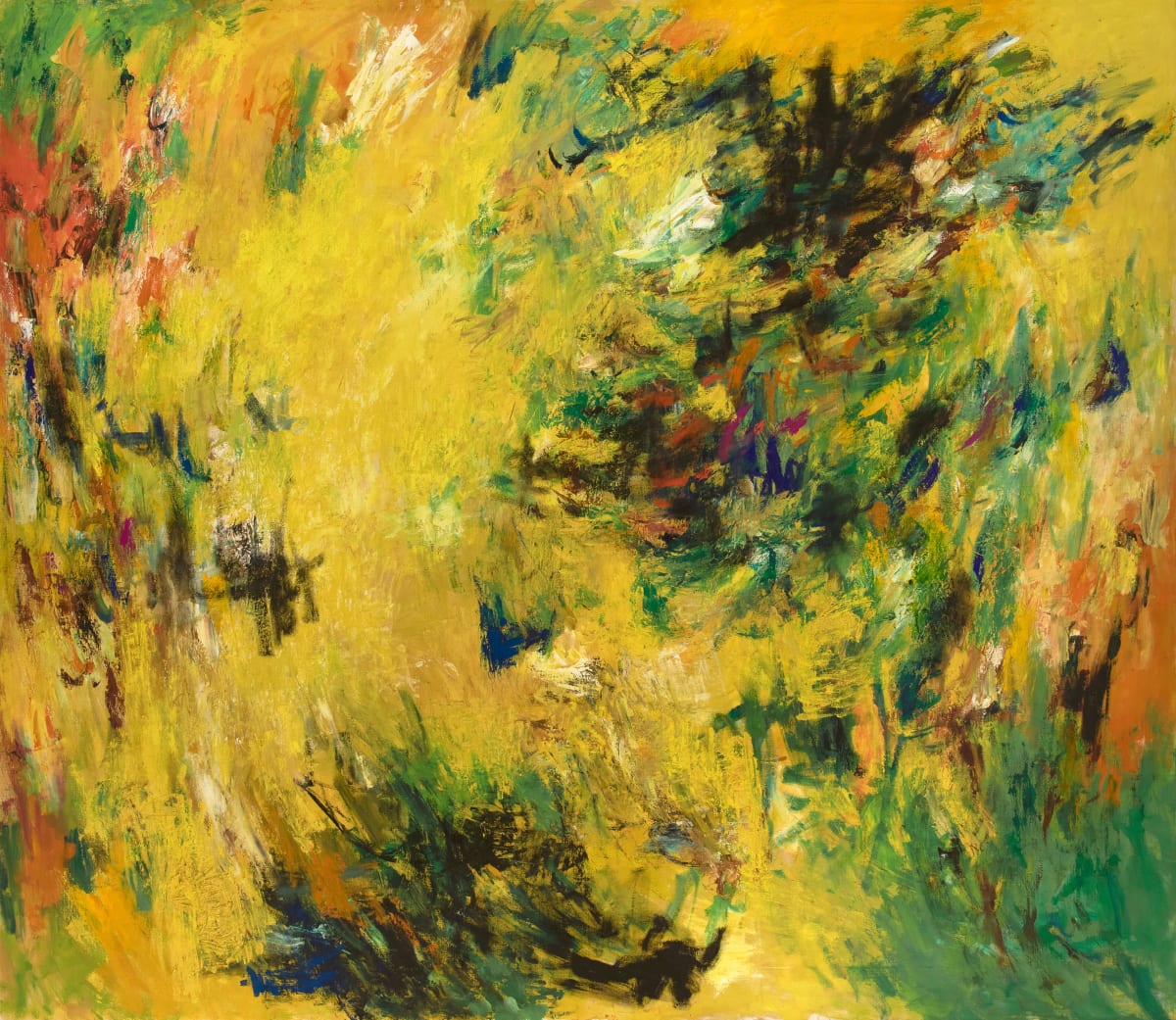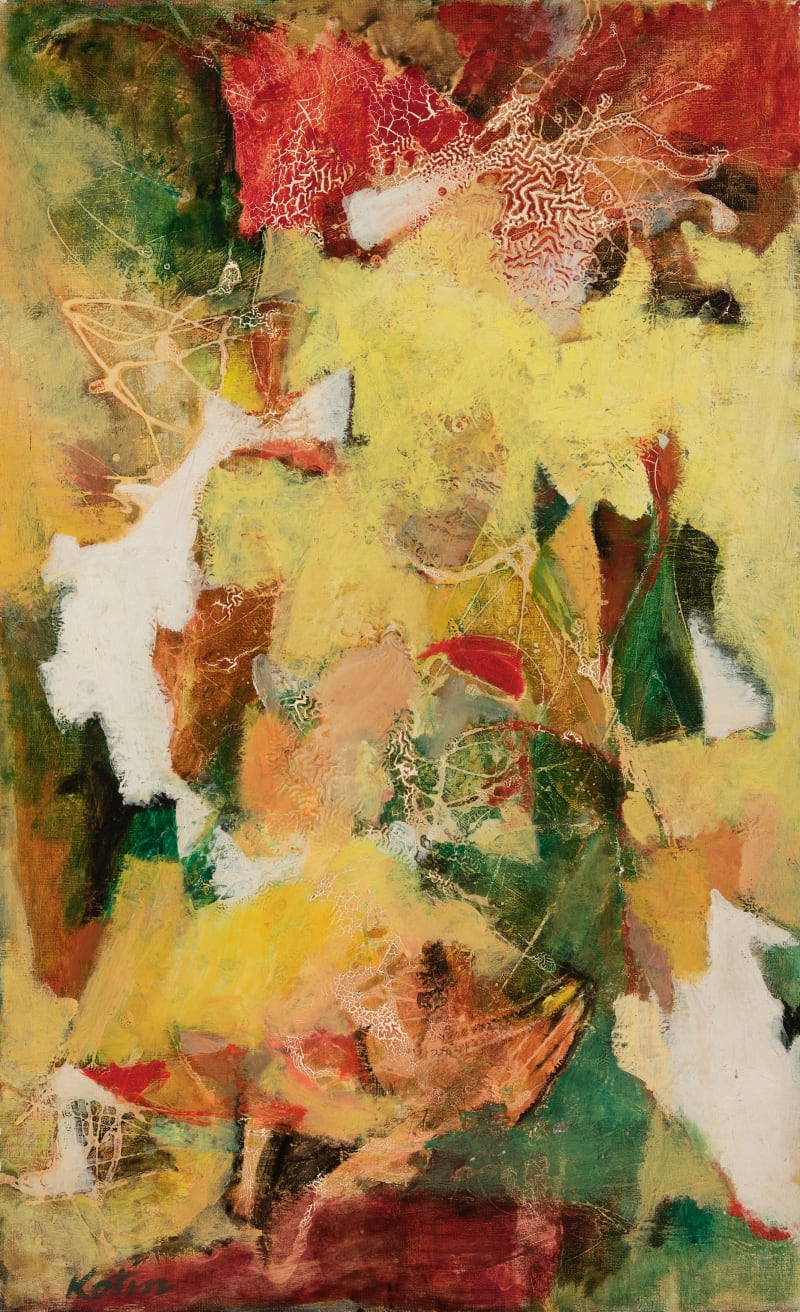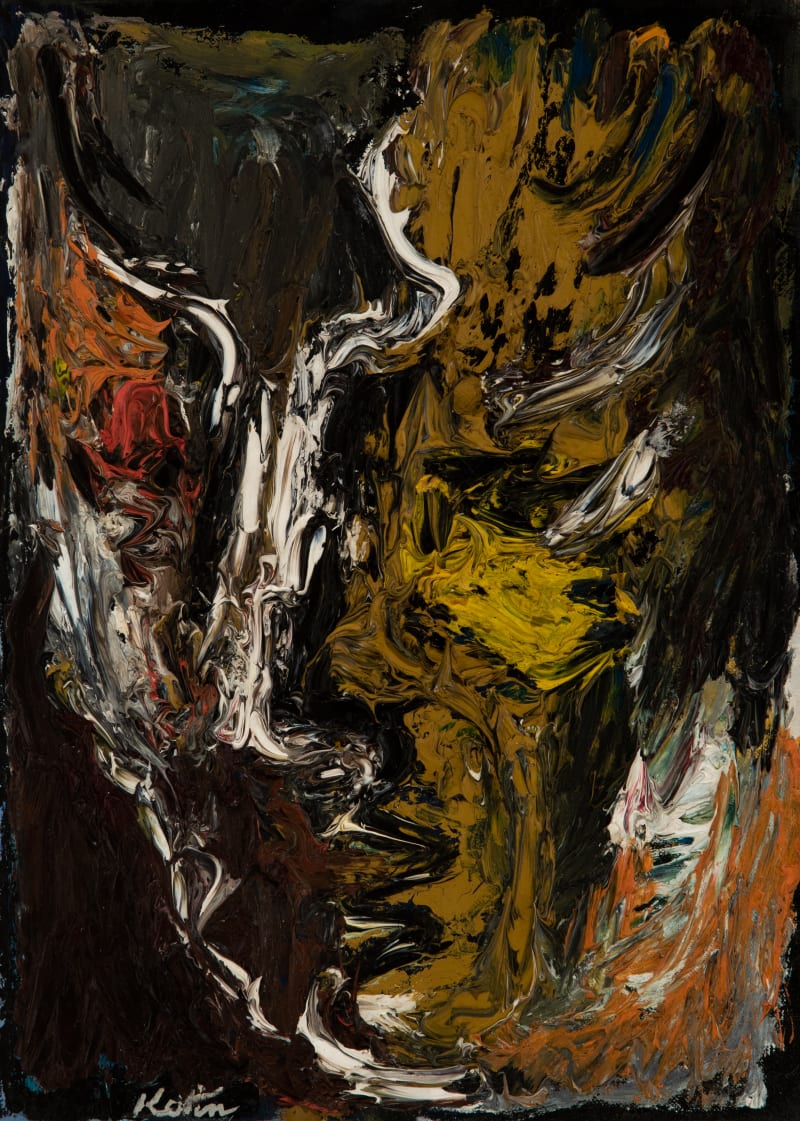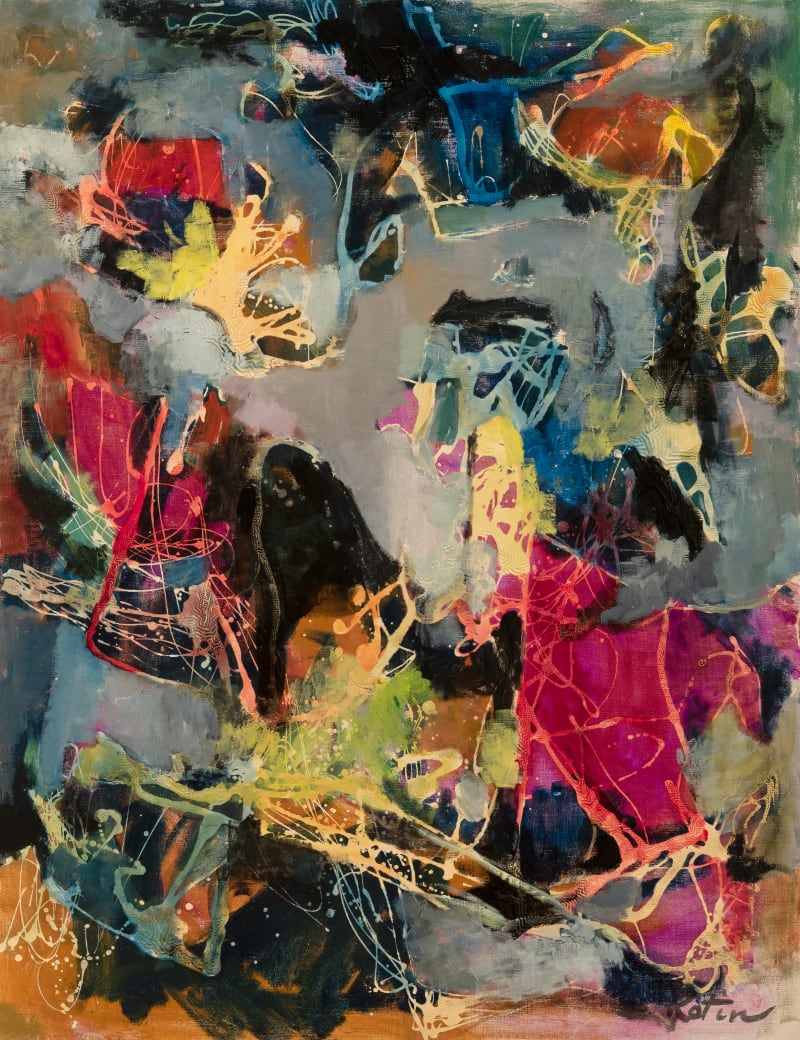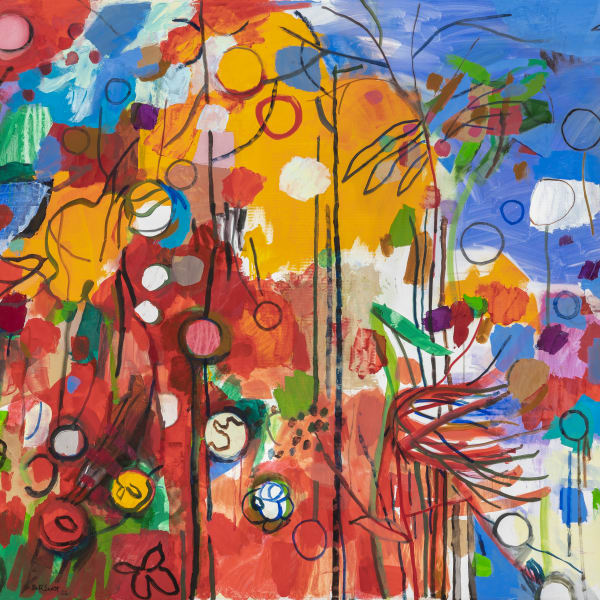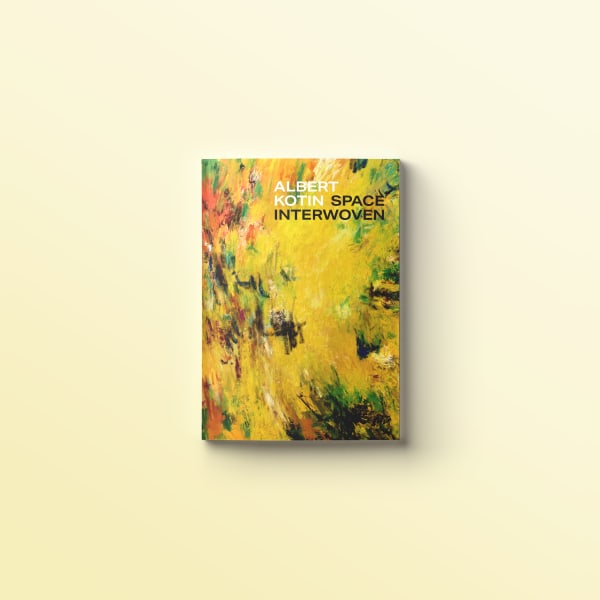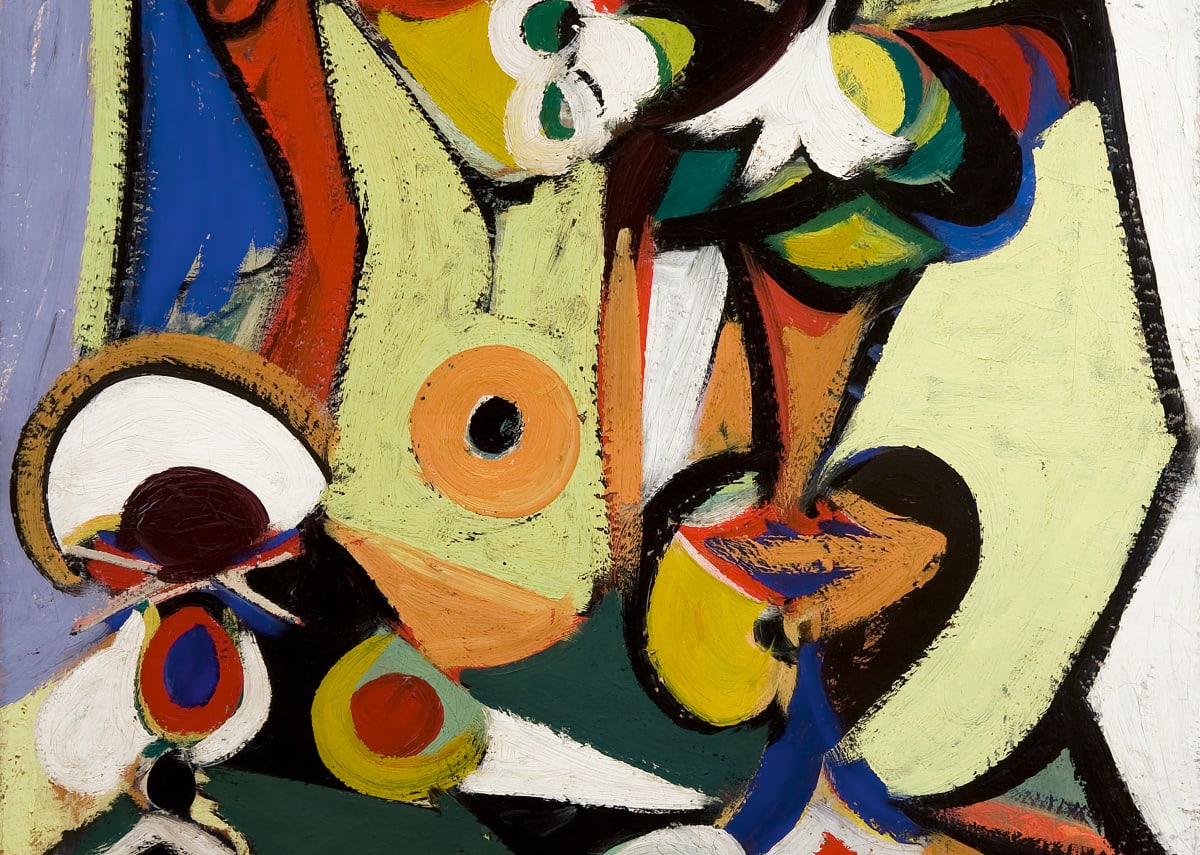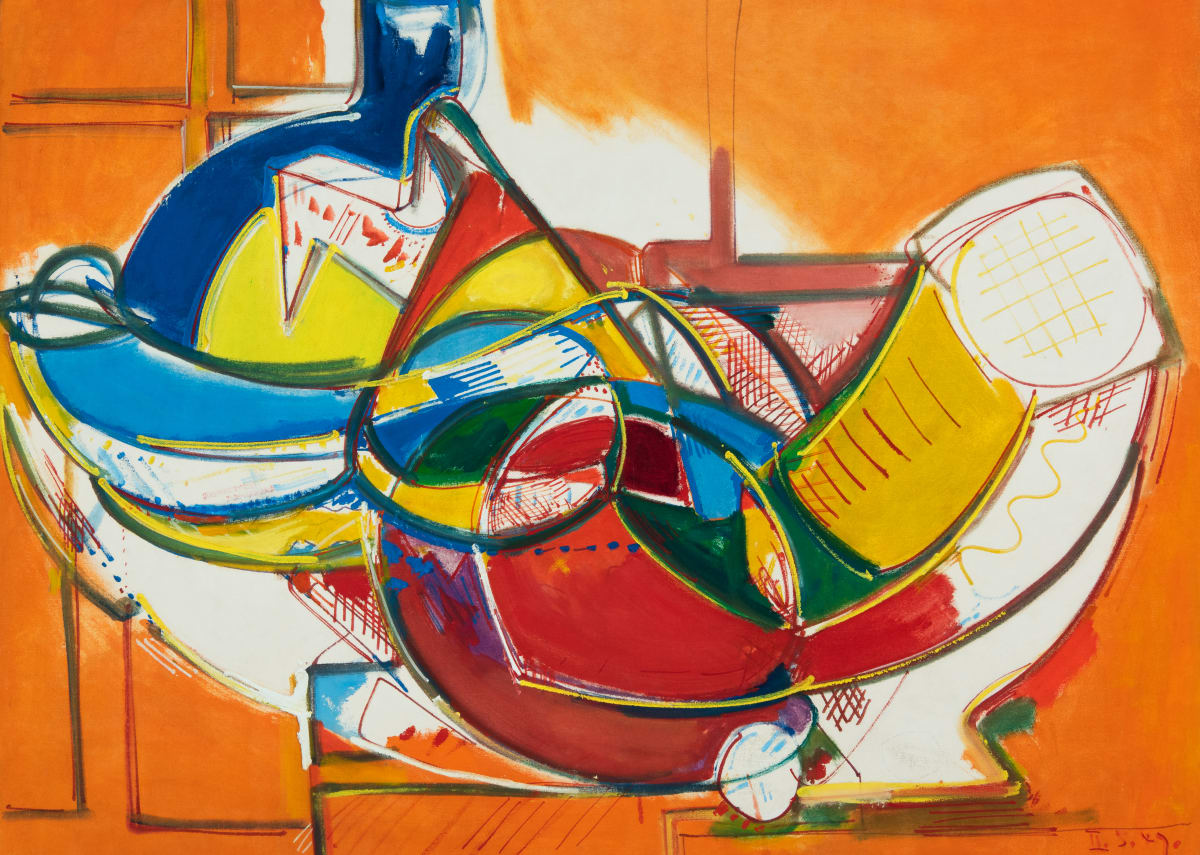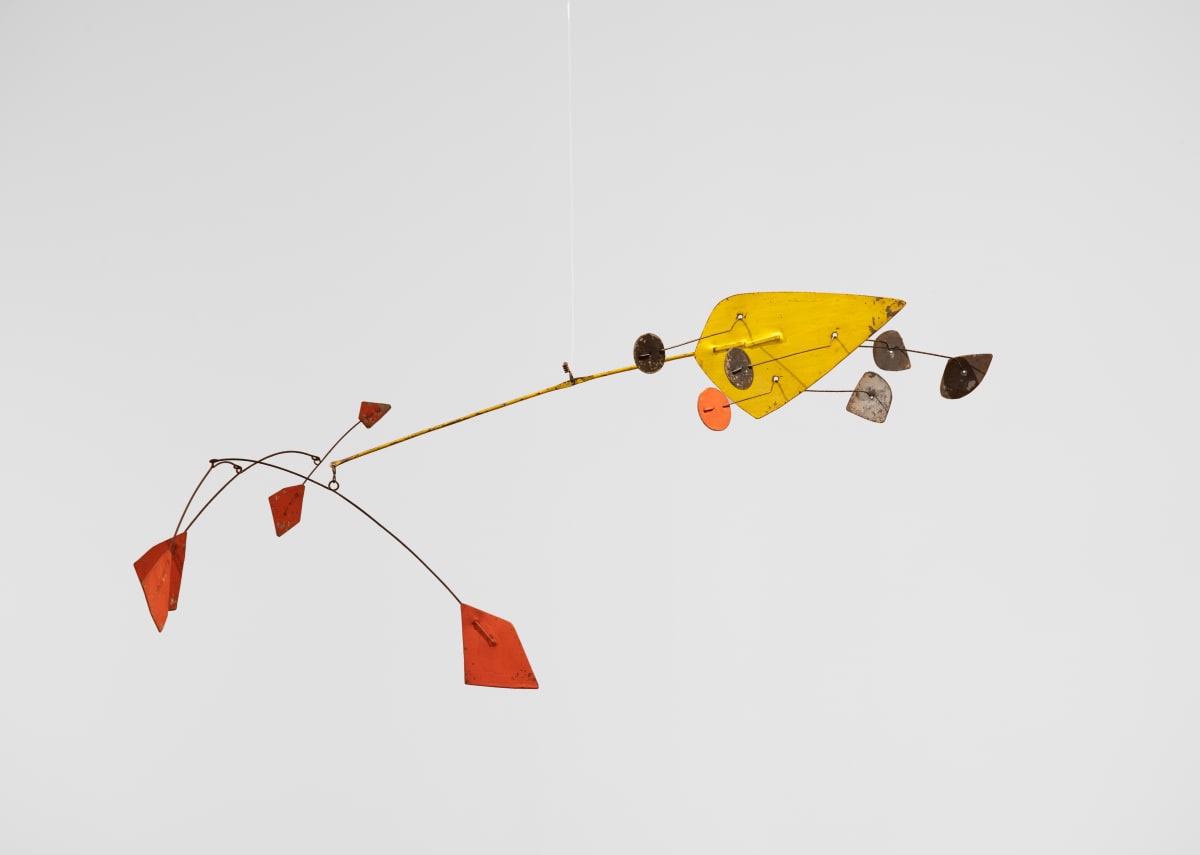
Often experimenting with dense tangles of marks that seem to move in an eolic fashion, he conceptualized space as “interwoven within itself”
A core member of the New York School’s first generation of Abstract Expressionists, Albert Kotin enjoyed a prolific output in the 1950s as part of the “Downtown Group,” a circle of artists in lower Manhattan that included Franz Kline, Willem de Kooning, and Jack Tworkov. Kotin was among the group of artists selected to participate in the historic Ninth Street Show in 1951 that formally inaugurated abstract expressionism as the first American art movement to exert international influence. Credited by critic Clement Greenberg for setting a precedent of showing experimental work, the exhibition launched the careers of numerous notable abstractionists including Helen Frankenthaler, Barnett Newman, and Joan Mitchell. Given the success of the 1951 show, the tradition continued for five years, and Kotin was one of the few artists to be invited to participate in every iteration—a distinction made more meaningful as participants were chosen by fellow artists. As the artist Alexander Calder wrote in 1968, "As long as there are people such as Al Kotin, there is no danger to art."
A core member of the New York School’s first generation of Abstract Expressionists, Albert Kotin enjoyed a prolific output in the 1950s as part of the “Downtown Group,” a circle of artists in lower Manhattan that included Franz Kline, Willem de Kooning, and Jack Tworkov. Kotin was among the group of artists selected to participate in the historic Ninth Street Show in 1951 that formally inaugurated abstract expressionism as the first American art movement to exert international influence. Credited by critic Clement Greenberg for setting a precedent of showing experimental work, the exhibition launched the careers of numerous notable abstractionists including Helen Frankenthaler, Barnett Newman, and Joan Mitchell. Given the success of the 1951 show, the tradition continued for five years, and Kotin was one of the few artists to be invited to participate in every iteration—a distinction made more meaningful as participants were chosen by fellow artists. As the artist Alexander Calder wrote in 1968, "As long as there are people such as Al Kotin, there is no danger to art."
Kotin’s early work in the 1930s incorporated Cubist techniques and included Works Progress Administration-sponsored murals. His practice became increasingly abstract in the 1940s, as the clearly defined forms in his works broke down into pure evocations of mood and color. Kotin’s work in the late 1940s demonstrate his teacher Hans Hofmann’s core tenet of planar pushing and pulling, in which a depth of field is achieved without using perspectival devices but rather through overlapping planes color. In the mid 1950s, Kotin moved away from both poured paint and thin washes of color, opting instead for expressive medium-to-large scale paintings with thick impasto covering the entire canvas to create an all-over, heavily textured surface. Often experimenting with dense tangles of marks that seem to move in an eolic fashion, he conceptualized space as “interwoven within itself” and as “a curtailed infinity moving with a force that creates an element of time and emotion.” (1) His practice connected with the predominant dialogues and arguments of the time and captured his own grappling with questions of abstraction and expressionism.
In the late 1950s, Kotin began experimenting with the size and placement of canvases, creating diptychs composed of two independently painted canvases. He also began making diminutive paintings, which at their smallest were around three by five inches, perhaps as a reaction against the prevailing grandiose scales of fellow Abstract Expressionists at the time. Kotin’s stylistic preferences shifted from heavy impasto to impressionistic, softer strokes, as seen in October, which was created in 1958 (and reworked in 1959) for a solo show at the Grand Central Moderns in 1958.
In later years, perhaps out of a tacit frustration at the limits of visual abstraction, Kotin turned to poetry, and his works from the 1960s often mobilize a symbolic use of words. Meditating on Kotin’s long career, Hofmann wrote to Kotin in 1964, "It seemed to me that over a period of 20 years since I know you as an artist, as a student, and as a friend, that the development of your work has reached a climax of great magnitude and great beauty based on a continued profound introspection and painterly development." Indeed, in the same year, a review by the New York Herald Tribune of Kotin’s solo show at Byron Gallery remarked, “Though neglected, Kotin’s statement has the unmistakable ring of truth and conviction.”
Born in 1907 in Russia, Albert Kotin immigrated to the United States in 1908. From 1929 to 1932, Kotin lived in Paris and studied at the Academié Julian, Académie de la Grande Chaumière, Atelier de Fresque, and Académie Colarossi. In 1933, Kotin was employed under the first government art program, Public Works of Art Project (PWAP), which lasted just seven months. Like Arshile Gorky and Willem de Kooning, Kotin was assigned to the murals division. After serving in the military as a cartography instructor, he studied at the Art Students League with Hans Hofmann from 1947 to 1951. As a result of inventing a compass that could also draw ellipses, Kotin was offered a teaching position at the Polytechnic Institute of Brooklyn, where he taught from 1952 to 1961. Afterwards, he taught at Long Island University from 1966 to 1975. Kotin died in 1980. His work has been exhibited at the Library of Congress, Washington, D.C. (1947); The New School for Social Research, New York (1948); Stable Gallery in New York (1951, 1953-1957); Contemporary Arts Museum in Houston (1959); the Museum of Modern Art in New York (1963-64); and Long Island University, New York (1968), among others.
- Albert Kotin, "Statement," It Is. New York: Magazine for Abstract Art, Second Half Publishing Co., No. 4, Autumn 1959.









